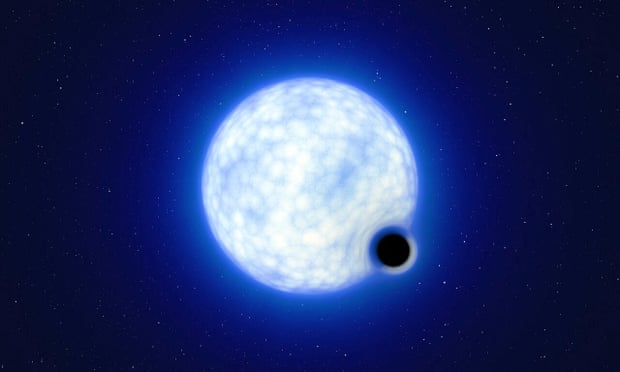VFTS243 has a mass nine times that of the Sun’s and is in a binary system with a companion star

Tue 19 Jul 2022 03.42 AEST
Last modified on Tue 19 Jul 2022 04.37 AESTThough it is not the first contender, a researcher from the University of Sheffield says this black hole is “the first to be unambiguously detected outside our galaxy”.
The researchers had been looking for black hole binary systems for more than two years before finding what has become known as VFTS243.
Paul Crowther, professor of astrophysics at the university, described it as a “very exciting discovery” that arrives after “a number of dormant black hole candidates have been proposed”.
Stellar-mass black holes are formed when massive stars reach the end of their lives and collapse under their own gravity. In a system of two stars revolving around each other, this process leaves behind a black hole in orbit with a luminous companion star.
The newly discovered dormant black hole is at least nine times the mass of the Earth’s Sun, and orbits a hot blue star weighing 25 times as much as the Sun.
As part of the international research team, Crowther has been working with Tomer Shenar from the Institute of Physics and Astronomy, who started the study at KU Leuven in Belgium and is now a Marie-Curie fellow at Amsterdam University in the Netherlands.
Confirming the likelihood of what he termed a “direct-collapse scenario”, ie, a collapse without an explosion, Shenar believes this has “enormous implications for the origin of black hole mergers in the cosmos”.
A
black hole is considered dormant if it does not emit high levels of
X-ray radiation, which is how such black holes are typically detected.
Dormant black holes are hard to spot as they do not interact much with
their surroundings.
VFTS 243 was found using six years of
observations of the Tarantula Nebula by the fibre large array multi
element spectrograph instrument on the European Southern Observatory’s
Very Large Telescope.
No comments:
Post a Comment